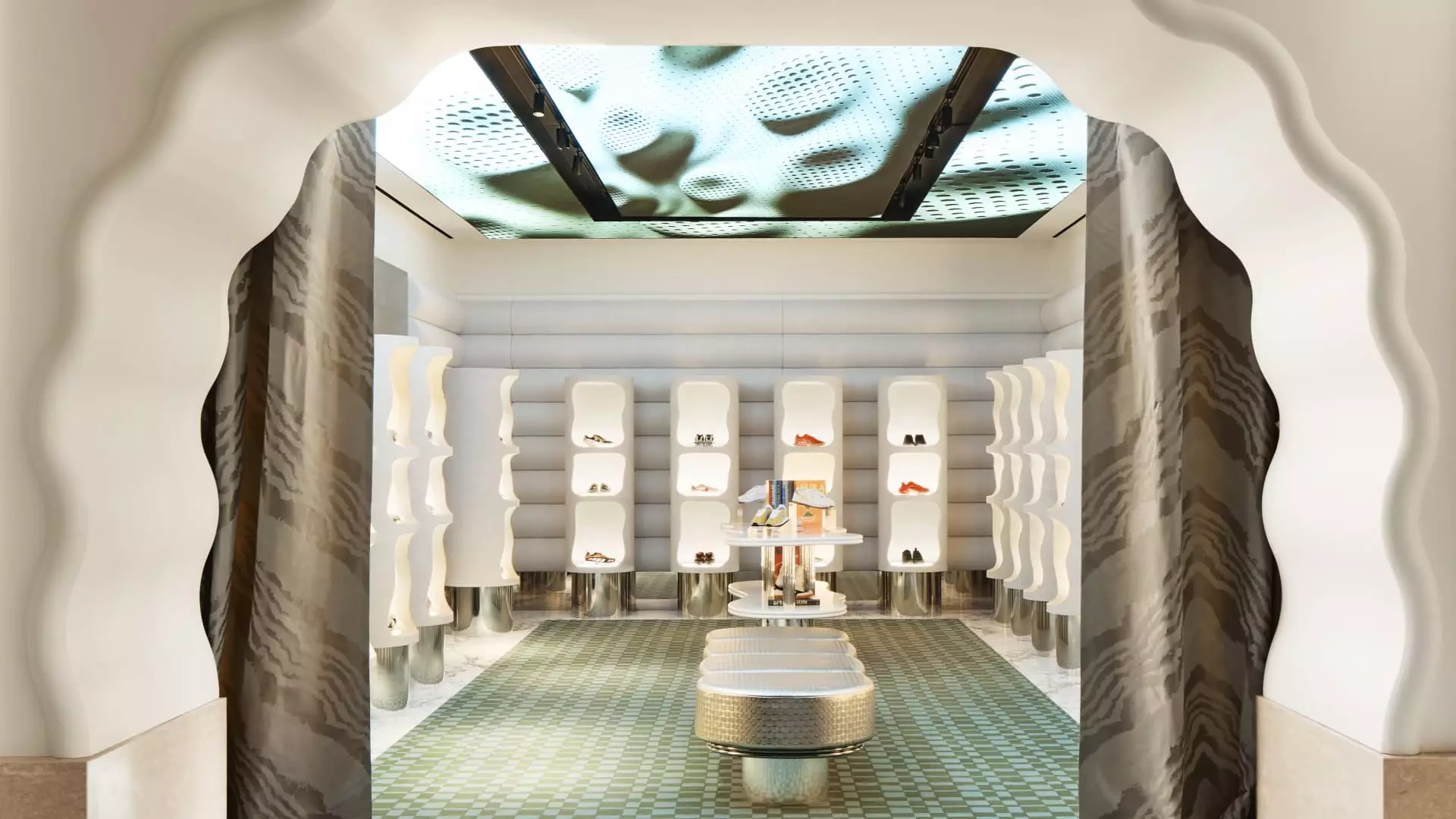The allure of Paris has many manifestations, but Printemps’s recent launch in New York City’s Financial District transforms it into a potent emblem of luxury retail. Opening its first U.S. store, the 55,000-square-foot space offers more than just high-end clothing and accessories; it invites consumers into a whimsical realm that blends the opulence of French retail with the vibrancy of New York City. The timing of this launch, aligned with the onset of spring—its namesake—evokes a sense of rebirth and renewal, a fitting backdrop for a brand trying to carve its niche amidst changing consumer trends.
As Printemps navigates a markedly different luxury landscape characterized by economic uncertainty, its strategy tactfully interweaves compelling architecture, a curated mix of both rare and recognized brands, and immersive customer experiences that evoke the feeling of stepping into a Parisian apartment. This positioning challenges the more traditional models of luxury shopping that many brands lean on. It’s a question worth pondering: as consumer behaviors shift, can immersive environments bridge the gap where mere product offerings no longer suffice?
The ‘Red Room’ and Other Enchantments
One of the standout features of the Printemps store is its “Red Room,” an Art Deco marvel that redefines the shopping experience. Once a reception hall for Manhattan’s financial elite, this beautifully restored area now houses an unconventional “shoe forest.” The reimagined space offers something more than merely the chance to shop; it brings a unique aesthetic sensibility that compels visitors to linger and engage rather than merely purchase. It’s a tactful invitation for experiential engagement—a hallmark of modern luxury shopping that increasingly prioritizes experience over transaction.
The concept of transforming leftover time into memorable experiences aligns perfectly with modern consumer expectations. In an era where purchasing decisions are influenced by aesthetics, the Red Room serves a dual function: it showcases Printemps’s merchandise and acts as a magnetic pull, enticing potential customers to enjoy a glass of wine or indulge in a lifestyle beyond mere shopping. This subtle encouragement of leisurely consumption highlights how retail experiences are evolving in an economy grappling with inflation and wavering consumer confidence.
Is Luxury Retail Recession-Proof?
Despite Printemps’s opulent foray into New York amid reported declines in luxury spending globally, an undeniable narrative emerges—the resilience of American consumers. Several high-end brands, including Tiffany & Co. and Louis Vuitton, are doubling down on investment in grand physical spaces, driving home the point that physical presence is crucial in capturing affluent buyers who value premium service. The luxury sector is built on exclusivity, and there is a palpable difference between feeling like a VIP in a lavish store and clicking through an online catalog.
Moreover, as inflation looms and economic uncertainty remains, skepticism about luxury purchases surfaces even among high earners. Printemps’s entry into the U.S. market amid this turbulent backdrop brings forth provocative questions: Can lavish brands cultivate enduring loyalty when discretionary spending tightens? Are they equipped to adjust their offerings to align with shifting priorities of their consumers? It’s a risky venture, yet one that might pave the way for more nuanced and adaptive luxury retail approaches in the future.
Americans’ Craving for French Culture
Adding further complexity to this luxury puzzle, the cultural allure of France resonates strongly in the hearts of many Americans. Post-pandemic travel has seen more Americans visit Paris, leading to greater brand recognition and emotional attachment long before the store even opened. Printemps has anticipated this trend, riding the wave of aspiring connoisseurs looking for an authentic slice of France in their own city. This simultaneous duality—appealing to both the affluent elite and the aspirant shoppers—might be a compelling strategy to expand its footprint in an otherwise cautious economic climate.
Interestingly, additional brands like Primark and Mango are advancing their endeavors in the U.S., which implies that while the high-end market falters, accessible luxury may gain ground. The calculated movement of Printemps to include more affordable items speaks to a larger conversation: are luxury retailers becoming more egalitarian in offerings to sustain sales amidst shifting demographics and spending patterns?
Navigating a Luxury Dilemma
Ultimately, Printemps’s venture is emblematic of broader trends faced by luxury retailers globally. The delicate balance between maintaining exclusivity and evolving to meet consumer needs creates a paradox for brands aiming to thrive. The question remains: can Printemps, with its mix of unique aesthetic allure and diverse merchandise, identify a sweet spot in the American luxury market? One thing is for certain: as consumers continue to redefine luxury, Printemps may just be at the forefront of a paradigm shift in retailing that prioritizes experience more than ever—a bold statement in a world growing wearied by excess.

